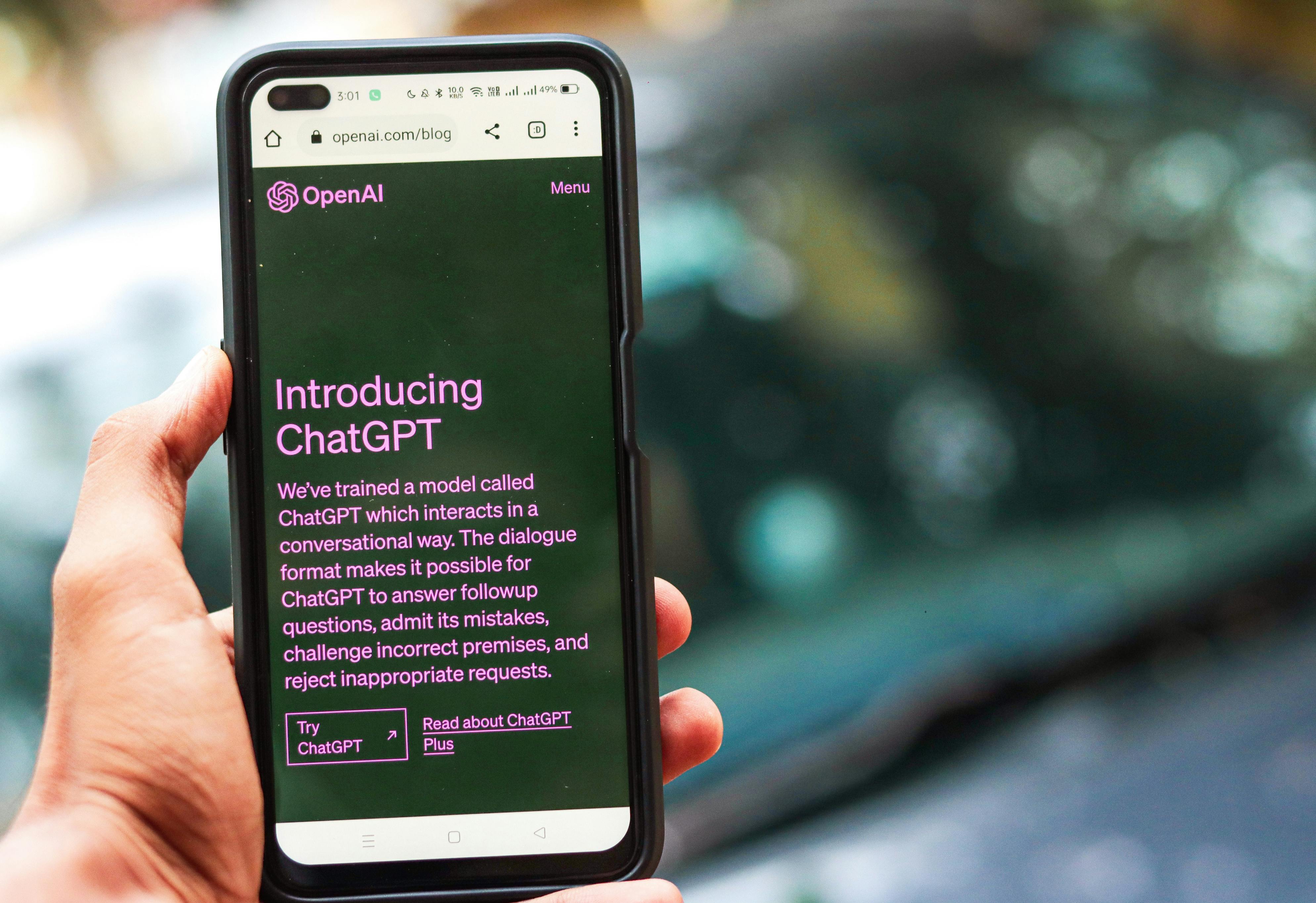
Unveiling the World of Traffic Bots: Harnessing the Benefits and Scrutinizing the Pros and Cons
In the fast-paced digital world we live in, website owners, marketers, and businesses are constantly seeking ways to boost their online presence. One such method is using traffic bots, powerful tools designed to drive internet traffic and increase visibility. This article aims to provide an introductory overview of what exactly traffic bots are and how they function.
Traffic bots are software programs or specialized scripts developed to automate the generation of website traffic. These bots simulate the behavior of real users, engaging with specific websites or online platforms by performing typical activities like clicking links, surfing various pages, filling out forms, or leaving comments. Essentially, they mimic human interaction while being capable of executing tasks at a much larger scale and speed than any human could achieve manually.
These bots can generate traffic in two main ways – organic and non-organic. Organic traffic refers to visitors who find your website through search engines like Google, Bing, or Yahoo!. Non-organic traffic comes from sources other than search engines, such as social media platforms, referrals from external websites, or paid advertisements. Traffic bots can be specifically programmed to generate either type of traffic based on given instructions.
The functioning of traffic bots heavily relies on proxies. Proxies act as intermediaries between the bot and the targeted website by concealing the bot's actual IP address. Essentially, they provide anonymity and prevent the bot from being easily identified as non-human activity. By rotating through different proxies, traffic bots mimic real users accessing websites from various locations across the globe.
Furthermore, some advanced traffic bots can emulate user parameters such as time spent on a webpage, mouse movement patterns, and even scrolling behavior. These features contribute to making bot-mediated activity appear more natural and harder to detect for site analytics tools.
Aside from boosting website visibility and generating traffic numbers that may impress advertisers or clients, the use of traffic bots carries certain risks and ethical considerations. Employing traffic bots to manipulate website statistics, game ad networks, or engage in fraudulent activities violates ethical guidelines and can lead to severe consequences like penalization, bans, or a damaged reputation. Therefore, it's crucial to use traffic bots responsibly and within legal boundaries.
In conclusion, traffic bots are powerful tools employed in the digital world to artificially generate internet traffic. They mimic human behavior on websites, creating the illusion of organic engagement. By utilizing proxies and advanced features, these bots can appear remarkably close to a genuine user. Nevertheless, their usage demands responsibility and consciousness to avoid unethical practices. Understanding the capabilities and implications of traffic bots helps navigate this technological landscape while harnessing their potential efficiently.
 The Role of Traffic Bots in Digital Marketing StrategiesThe Role of traffic bots in Digital Marketing Strategies
The Role of Traffic Bots in Digital Marketing StrategiesThe Role of traffic bots in Digital Marketing StrategiesTraffic bots have emerged as indispensable tools in digital marketing strategies. These automated programs simulate human behavior to generate traffic, or visitors, to websites. However, their involvement in digital marketing is not limited to simply increasing visitor counts. There are several roles that traffic bots play in enhancing online marketing efforts.
Driving Organic Traffic: Traffic bots contribute significantly to driving organic traffic for websites. By replicating human browsing patterns, they can attract real users who are interested in the content or offerings provided by the website. This inflow of organic traffic helps improve a website's visibility and search engine rankings.
Boosting Website Rankings: Search engine optimization (SEO) is crucial for any successful digital marketing strategy. Traffic bots aid in this process by generating incoming links, promoting website indexing, and ensuring better positioning on search engine result pages (SERPs). Through their actions, traffic bots help boost a website's overall rankings and visibility on search engines.
Improving Ad Campaign Performance: Traffic bots play a vital role in optimizing online ad campaigns. With their ability to generate fake impressions and clicks, they provide marketers with more accurate data to fine-tune their advertising efforts. This information helps marketers analyze the effectiveness of their campaigns and make adjustments accordingly for better performance.
Enhancing Social Media Presence: Social media platforms have become an integral part of digital marketing strategies. Traffic bots can be utilized to improve social media presence through activities like auto-liking, auto-following, and auto-sharing content on various platforms. By engaging with potential customers through targeted interactions, traffic bots assist in building brand awareness and driving traffic from social media channels.
Data Collection and Analysis: Traffic bots can collect valuable data about user behavior, preferences, and demographics. This information helps marketers gain insights into their target audience, enabling them to optimize their digital marketing strategies for better results. By analyzing this collected data, marketers can refine their campaigns and deliver more personalized and targeted content to their audience.
Mitigating Competitor Analysis: Gaining a competitive edge in the digital realm is crucial for any business. Traffic bots enable marketers to survey and track competitor websites, analyzing trends, keywords, and strategies. By monitoring competitor activities, marketers can stay updated with industry developments, identify industry gaps, and adjust their own strategies accordingly.
Safety Measures: It is important to note that the involvement of traffic bots in digital marketing strategies must be carried out ethically and responsibly. Uncontrolled use of traffic bots can lead to issues such as fraudulent clicks, increased bounce rates, or even penalties from search engines. Implementing proper safety measures and leveraging traffic bots sensibly is vital to avoid such negative consequences.
In conclusion, traffic bots serve multiple roles in digital marketing strategies. From generating organic traffic to aiding in SEO efforts, optimizing ad campaigns, enhancing social media presence, collecting valuable data, and mitigating competitor analysis – traffic bots are versatile tools that optimize marketing efforts across various online platforms. Understanding their impact and utilizing them efficiently plays a significant role in achieving success in the ever-evolving digital landscape.
 Breaking Down the Types of Traffic Bots: Good Bots vs. Bad Botstraffic bots can be categorized into two main types: good bots and bad bots. Good bots serve legitimate purposes and are considered beneficial, while bad bots engage in malicious activities. It is important to understand the distinction between them to effectively manage web traffic and ensure a positive user experience.
Breaking Down the Types of Traffic Bots: Good Bots vs. Bad Botstraffic bots can be categorized into two main types: good bots and bad bots. Good bots serve legitimate purposes and are considered beneficial, while bad bots engage in malicious activities. It is important to understand the distinction between them to effectively manage web traffic and ensure a positive user experience.Starting with good bots, these are automated software programs created to perform specific tasks that aid website owners and users. Some examples of good bots include:
Crawlers: Also known as web spiders or web scrapers, these bots analyze websites by following links and indexing content for search engines. They help search engines like Google provide relevant search results by gathering information about various web pages.
Monitoring bots: These bots keep track of website performance, uptime, and availability. They provide insights into server health, response time, and the reliability of websites, which helps site administrators rectify issues promptly.
Feed-fetching bots: Used by news aggregators or RSS readers, these bots fetch new content from multiple sources and distribute it to users in one consolidated location. This saves time for users who would otherwise have to visit each website individually.
Chatbots: These AI-powered bots simulate human conversation and interact with users on messaging platforms or websites. Chatbots can assist users by answering frequently asked questions, providing recommendations, or completing specific tasks.
On the other hand, bad bots pose threats to websites and their users in various ways:
Spambots: These malicious bots aim to spread spam through comment sections, contact forms, or email. They flood platforms with unwanted advertisements or links containing malware.
Scrapers: Bad actors use scrapers to steal content such as product descriptions, articles, or blog posts from websites. The stolen content can be reused illegitimately or for malicious purposes.
Click fraud bots: Engaging in fraudulent behavior, these bots repeatedly click on online ads to generate fake traffic and inflate advertising costs for businesses.
Credential stuffing bots: These harmful bots try various combinations of usernames and passwords acquired from data breaches on multiple websites. Their aim is to gain unauthorized access to user accounts using stolen credentials.
Distributed Denial of Service (DDoS) bots: These bots orchestrate coordinated attacks by flooding a website with traffic, overwhelming its server and causing temporary or long-term downtime.
Differentiating between good bots and bad bots enables website owners to manage their traffic effectively. Implementing measures such as CAPTCHA tests, IP-based restrictions, or behavior analysis can help filter out malicious bots while allowing beneficial ones to access your website.
Since good bots assist in improving website visibility, ranking, and user experience, it is essential to welcome and accommodate them while also ensuring protection against the detrimental activities of bad bots through proper security mechanisms.
 How Businesses Use Traffic Bots to Boost Their Online PresenceWhen it comes to boosting their online presence, businesses are turning to traffic bots as a means to achieve high website traffic and visibility. These automated tools mimic human behavior to generate a surge of visitors by web crawling and engaging with websites. Here's an overview of how businesses utilize traffic bots to improve their online presence.
How Businesses Use Traffic Bots to Boost Their Online PresenceWhen it comes to boosting their online presence, businesses are turning to traffic bots as a means to achieve high website traffic and visibility. These automated tools mimic human behavior to generate a surge of visitors by web crawling and engaging with websites. Here's an overview of how businesses utilize traffic bots to improve their online presence.Enhancing Website Traffic:
Traffic bots play a critical role in increasing website traffic. By artificially generating visits, businesses can give the impression that their site is often frequented and highly popular. Elevated traffic numbers may attract potential customers and can also improve search engine rankings, potentially leading to even more organic visits.
Improving Search Engine Optimization:
Traffic bots can aid in improving search engine ranking through increased organic visits. Websites that frequently experience high visitor engagement tend to be seen as authoritative, relevant, and reliable by search engines. Consequently, this positively impacts a business's SEO efforts.
Achieving Higher Visibility:
With more significant website traffic, businesses have a higher chance of being noticed by potential customers. Improved visibility can enhance brand recognition and attract new leads. When users see a high number of visits and active interactions on a website, they often perceive it as trustworthy and reliable, making them more likely to engage with the business further.
Testing Website Performance:
Traffic bots can simulate website behaviors from multiple devices under different network conditions. By unleashing these bots across various platforms (mobile, desktop, tablet) or locations (local or international), businesses gain invaluable insights into their website performance. This helps analyze user experience elements, identify bottlenecks or bugs, and make necessary improvements.
Enhancing Ad Campaigns:
Traffic bots can be utilized to interact with contextual ads strategically. Businesses can program these bots to click on specific advertisements regularly or maintain an average ad engagement level. This proactive tactic aims to give ad campaigns an edge in competitiveness by attracting genuine visitors due to perceived popularity or high engagement numbers.
Gaining Competitive Advantage:
In today's digital landscape, competition among businesses is fierce. Utilizing traffic bots enables companies to stay competitive or even gain an edge. By artificially boosting website statistics and activities, they create an environment of credibility and popularity, making it more likely for potential customers to prioritize their products or services over competitors'.
Targeted Marketing Potential:
Traffic bots are capable of focusing visits on specific niches or user demographics. By programming bots to interact with specific characteristics, such as location, language, or behavior patterns, businesses can attract visitors who are more likely to convert into leads or make purchases. This enables targeted marketing efforts, efficiently utilizing resources to maximize results.
Overall, traffic bots serve as a powerful tool to boost business' online presence. While their widespread use raises ethical questions related to artificially influencing metrics, when employed responsibly, these automated tools can significantly contribute to achieve higher website traffic, visibility, and overall brand growth for businesses in the digital sphere.
 The Darker Side of Traffic Bots: Risks and Legal Implicationstraffic bots refer to computer programs or scripts designed to imitate human behavior online, often by generating and sending artificial traffic to websites or applications. While some may argue that using traffic bots can have legitimate purposes, like analytics gathering or load testing, it's important to be aware of the risks and legal implications associated with their usage.
The Darker Side of Traffic Bots: Risks and Legal Implicationstraffic bots refer to computer programs or scripts designed to imitate human behavior online, often by generating and sending artificial traffic to websites or applications. While some may argue that using traffic bots can have legitimate purposes, like analytics gathering or load testing, it's important to be aware of the risks and legal implications associated with their usage. One of the most significant issues is the potential violation of terms of service (ToS) agreements. Many websites or platforms explicitly state that the use of bots is not allowed, as it can disrupt the user experience and manipulate statistics. If caught, such violations could lead to penalties, including account suspension or termination.
Beyond breaching ToS agreements, traffic bots raise other concerns as well. Most notably, they often mislead website owners and advertisers by inflating visitor or engagement statistics. This manipulation of metrics can create an inaccurate impression of a website's popularity or the effectiveness of advertising campaigns. Ultimately, this undermines trust and adversely affects decision-making processes based on such data.
Another risk is related to click fraud. Traffic bots are sometimes used to generate fake clicks on online ads, aiming to increase ad revenue for the publishers or deplete the budget of a competitor's advertising campaign. Engaging in click fraud could result in substantial financial loss for advertisers while permanently damaging the reputation of those involved.
Moreover, employing traffic bots can lead to search engine penalties and damage search engine optimization efforts. Search engines like Google actively detect instances of artificial traffic generation and penalize websites accordingly. Such penalties can cause a significant decrease in organic search visibility and overall website performance.
Additionally concern lies within the realm of cybersecurity threats. Some bots may act maliciously, spreading spam, malware, or participating in distributed denial-of-service (DDoS) attacks. Unintentionally utilizing one such bot could make individuals liable for encouraging illegal activities carried out via their computer systems.
From a legal standpoint, the usage of traffic bots raises a host of issues. Different countries and jurisdictions have varying rules and regulations regarding online activities, including unauthorized bot usage. Depending on the severity of offenses committed with traffic bots, legal consequences can range from financial penalties to criminal charges.
Therefore, it is vital for individuals or organizations considering using traffic bots to examine the potential legal implications thoroughly and seek advice from legal professionals who specialize in cyber laws or intellectual property rights.
In summary, while traffic bots may offer certain benefits, the darker side of their usage presents considerable risks and legal repercussions. Breaches of terms of service, financial loss due to click fraud, SEO penalties, cybersecurity threats associated with malware or DDoS attacks, and potential legal action necessitate caution and awareness about the negative consequences beyond any short-term advantages they may provide.
 Examining the Impact of Traffic Bots on SEO and Website Metricstraffic bots are automated programs designed to generate website traffic by simulating human behavior. While these bots can be beneficial for certain purposes, it is essential to examine their overall impact on SEO (Search Engine Optimization) and important website metrics.
Examining the Impact of Traffic Bots on SEO and Website Metricstraffic bots are automated programs designed to generate website traffic by simulating human behavior. While these bots can be beneficial for certain purposes, it is essential to examine their overall impact on SEO (Search Engine Optimization) and important website metrics.One critical area affected by traffic bots is search rankings. Search engines analyze various factors to determine website rankings, and one key factor is organic traffic. Utilizing traffic bots may result in a significant increase in your website's traffic, but this traffic is often artificial and lacks genuine interest or engagement. Consequently, search engines may identify such activity as manipulative and penalize your website accordingly, leading to a drop in search rankings.
Another vital aspect is user engagement metrics. Traffic bots artificially inflate metrics such as page views, time spent on site, bounce rate, and social shares. While these metrics play a significant role in evaluating a website's performance and user experience, inflated numbers from bot-generated traffic distort the real picture. It creates an inaccurate representation of how actual users engage with your content, making it difficult to make informed decisions for improving user experience.
Furthermore, traffic bots can negatively impact conversion rates. These bots do not possess the intent to convert or make purchases on your website; therefore, they add no real value to your business. Increased traffic numbers while lacking authentic engagement may lead to a skewed understanding of your target audience's buying behavior. Businesses need reliable data regarding visitor actions and preferences to optimize their conversion strategies effectively.
Additionally, the use of traffic bots might affect server performance and bandwidth usage. When bots rapidly generate artificial traffic, it puts a strain on server resources and bandwidth capacity. This can result in decreased website loading speed, which significantly impacts user experience and can discourage visitors from exploring the site further or revisiting it in the future.
Moreover, opposing websites may utilize traffic bots against their competition maliciously. Competitors can use such bots to overload servers deliberately or disrupt normal traffic flow when online services rely on metrics like uptime, response time, or concurrent connections. It can create a negative impact on a website's availability, reputation, and reliability.
To conclude, while traffic bots might seem attractive as a means to boost SEO and drive traffic, their impact on website metrics and overall performance is generally negative. Utilizing these bots can lead to penalties from search engines, inaccurate user engagement data, potentially hinder conversion rates, harm server performance, and even expose websites to malicious attacks. Thus, it is crucial to prioritize organic traffic acquisition approaches while maintaining a genuine user-focused experience for sustainable growth and success.
 Pros of Using Traffic Bots: Automation, Efficiency, and BeyondUsing traffic bots for various online purposes offers numerous benefits. Here are some advantages worth mentioning:
Pros of Using Traffic Bots: Automation, Efficiency, and BeyondUsing traffic bots for various online purposes offers numerous benefits. Here are some advantages worth mentioning:Automation: By utilizing traffic bots, you can automate multiple tasks involved in driving traffic to your website. These bots are designed to mimic human behavior and carry out actions such as clicking on links, navigating pages, filling forms, and more. This automation saves valuable time and effort by eliminating the need for manual execution.
Efficiency: Traffic bots efficiently generate traffic and increase the number of visits to your website within a short period. Compared to manual methods which are time-consuming and slow, bots can simulate interactions with multiple users simultaneously, boosting traffic numbers exponentially. Additionally, they can run continuously without breaks or interruptions, maximizing efficiency.
Cost-effective: Implementing traffic bots can be an affordable way to drive traffic to your website. Hiring professionals or paying for online ads can sometimes be costly. Using bots eliminates or reduces these expenses as you can achieve similar if not better results without spending extensively on advertising campaigns or external services.
Valuable insights: Traffic bots can provide important insights about user behavior and patterns while accessing your website. By analyzing user data generated by these bots, you can obtain a deeper understanding of the effectiveness of your website's design, content placement, navigation flow, and overall user experience. These insights allow you to improve your site and optimize its performance accordingly.
Increased visibility: Generating traffic improves your website's visibility through search engine optimization (SEO). As search engines like Google often rank websites higher based on their organic traffic, having consistent visits can positively impact your website's rankings in search results. By using traffic bots properly, you can potentially increase your chances of reaching a wider audience.
Peak-time optimization: Traffic bots also allow you to optimize website performance during peak times. During periods of high demand or specific events that could attract increased traffic, utilizing bots helps manage sudden surges effectively. This capability prevents potential website slowdowns or crashes due to overwhelming user requests.
Targeted traffic control: Bots can be programmed to target specific demographics, locations, or customer preferences while generating traffic. By tailoring its behavior, a bot can attract visitors who are more likely to engage with your website's content, products, or services. This targeted approach enhances the quality of traffic reaching your site and increases the possibility of conversion.
Keep in mind that while utilizing traffic bots offers benefits, ethical considerations are crucial. Ensure compliance with applicable laws and guidelines to avoid any negative consequences for your website or business reputation.
 Cons of Relying on Traffic Bots: Ethical Concerns and Potential PenaltiesWhen it comes to traffic bots, there are several cons associated with using them that go beyond mere practical concerns. Ethical considerations and potential penalties should not be overlooked when relying on traffic bots for boosting website traffic.
Cons of Relying on Traffic Bots: Ethical Concerns and Potential PenaltiesWhen it comes to traffic bots, there are several cons associated with using them that go beyond mere practical concerns. Ethical considerations and potential penalties should not be overlooked when relying on traffic bots for boosting website traffic. 1. Unethical Practices:
Using traffic bots can be considered unethical since they artificially inflate website views or clicks through non-human interactions. This can misrepresent actual engagement, deceive advertisers or sponsors, and compromise the integrity of web analytics.
2. False Metrics:
Traffic bots generate false metrics like page views, click-through rates, or even conversions. This misleading data can misguide businesses into making incorrect decisions based on inaccurate insights.
3. Conversion Rates:
Although traffic bots may increase overall traffic, they rarely drive genuine organic engagement. The lack of real human visitors reduces the chances of quality leads, conversions, or sales. Ultimately, these can have a negative impact on a website's performance.
4. Violation of Platform Terms:
Many online platforms strictly prohibit the use of traffic bots as they violate the terms and conditions set by these platforms. Such violations can lead to penalties, which may range from temporarily suspending accounts to permanent bans and legal actions.
5. SEO Ranking Risk:
Search engine algorithms continuously evolve to detect fraudulent practices like using traffic bots for boosting rankings. If caught, websites employing such methods risk penalties that negatively impact their search engine optimization (SEO) efforts, resulting in lower visibility and decreased organic traffic.
6. Reputation Damage:
Using traffic bots leaves a mark on a website's reputation and credibility in the digital realm. Once identified by users or competitors, trust and confidence diminishes among audiences who value authentic interactions.
7. Legal Consequences:
In certain cases, deploying traffic bots may cross legal boundaries. Actions such as engaging in click fraud or falsely boosting ad impressions can result in legal disputes and penalties as it violates fair competition rules or advertising regulations.
8. Wasting Resources:
Depending on the scale of traffic bot usage, financial resources can be depleted quickly with little to no substantial return on investment. Other aspects of a business, such as genuine organic growth strategies, investment in quality content, or user experience improvements, might get neglected.
9. Advertiser Dissatisfaction:
For websites relying on ad revenue, the use of traffic bots misrepresents metrics and artificially inflates advertising impressions. As a consequence, advertisers may receive reduced returns on their investments, causing dissatisfaction and potential loss of partnerships.
Addressing the ethical concerns and potential penalties related to traffic bots is crucial for businesses committed to navigating transparency and sustainability in the online world. By adhering to ethical principles and focusing on attracting organic traffic through legitimate means, businesses can build genuine brand recognition, foster strong relationships with their audiences, and prevent negative consequences in the long run.
 Detecting and Filtering Unwanted Bot Traffic on Your SiteDetecting and Filtering Unwanted Bot traffic bot on Your Site
Detecting and Filtering Unwanted Bot Traffic on Your SiteDetecting and Filtering Unwanted Bot traffic bot on Your SiteIn today's digital landscape, websites have become prime targets for all sorts of automated internet bots, including unwanted ones. These bots can wreak havoc, causing various issues like skewed traffic analytics, inflated advertising costs, and increased server loads. Therefore, it is crucial for website owners to proactively detect and filter out these unwanted bot traffics. Here are some key insights on the topic:
1. Start with analyzing website logs: One way to begin identifying potential bot traffic is by scrutinizing your website's access logs. Look for patterns such as unusual user agent strings, identical request intervals, or repetitive source IP addresses. Although this process may be time-consuming and requires technical know-how, it can provide valuable insights.
2. Implement regular CAPTCHA challenges: Many bots find it challenging to complete CAPTCHA (Completely Automated Public Turing test to tell Computers and Humans Apart) challenges. By periodically implementing CAPTCHAs throughout forms or even during account signup pages, you can effectively filter out many unwanted bots.
3. Set up Robots.txt file: A robots.txt file allows you to instruct search engine crawlers how to interact with your site. While well-behaving bots obey these instructions, malicious ones can ignore them. However, it's still a good practice to use a robots.txt file as it helps minimize unwanted bot activities by shaping how your site interacts with legitimate bot traffic.
4. Utilize user agent identification: Monitor and analyze user agent strings present in HTTP headers to identify suspicious behavior. Bots often use unusual or outdated user agents that differ significantly from those used by real users or search engine crawlers.
5. Examine referral data: Check referral data in your analytics platform to pinpoint external sources driving questionable traffic to your site. If you notice sudden influxes from unfamiliar domains or unexpected spikes in traffic numbers from known malicious sources, you might need to investigate further.
6. Evaluate IP blacklists: Explore commercially available IP blacklist services or curated database listings to identify known malicious bot addresses. By blocking these IPs, you can significantly reduce unwanted bot traffic.
7. Consider behavior-based filtering: Rather than solely relying on identification methods, such as IP addresses or user agents, employ behavior-based filtering techniques. These look for suspicious usage patterns, such as excessive page requests from a single session or unusually rapid navigation between pages.
8. Employ machine learning algorithms: Advanced machine learning algorithms can help detect and filter out unwanted bot traffic efficiently. These algorithms analyze various factors, like mouse movements, keystrokes, mouse tooltips, and more, enabling intelligent identification of bots that go beyond simple signature matching methods.
9. Monitor and update regularly: As new types of bots continually emerge with evolving tactics, it is essential to proactively monitor and update your detection mechanisms regularly. This helps adapt your defenses and stay ahead of the ever-changing landscape of unwanted bot traffic.
By implementing these measures, website owners can proactively tackle unwanted bot traffic and significantly improve their site's performance and data accuracy.
 The Future of Web Traffic: Emerging Trends in Bot TechnologyThe future of web traffic bot is steadily evolving, with emerging trends in bot technology playing a significant role in shaping this landscape. Bots have become an integral part of online activities, and their impact is expected to increase in the coming years.
The Future of Web Traffic: Emerging Trends in Bot TechnologyThe future of web traffic bot is steadily evolving, with emerging trends in bot technology playing a significant role in shaping this landscape. Bots have become an integral part of online activities, and their impact is expected to increase in the coming years.Advancements in artificial intelligence (AI) and machine learning have empowered bots to imitate human behavior with greater accuracy and sophistication. This has given rise to "smart bots" that can perform tasks traditionally reserved for humans, such as customer service interactions, content creation, and social media engagement.
Alongside these developments, chatbots have gained traction as an effective means of interacting with website visitors. They facilitate seamless communication by responding to inquiries, providing assistance, and even completing transactions on behalf of businesses. Chatbots are continuously advancing in natural language processing and contextual understanding, making them more efficient and enhancing user experiences.
Another aspect propelling the future of web traffic is the integration of bots in search engine optimization (SEO) efforts. SEO bots help businesses improve their ranking on search engines by analyzing and optimizing website content. These enhancement tools crawl websites, identify areas for improvement, suggest keywords, and streamline overall SEO strategies.
Influencer relationship management is being facilitated by bots as well. Bots assist businesses in identifying potential collaborators or influencers based on predefined criteria such as relevance, reach, and engagement. Such automation saves time previously spent manually scanning through potential partnerships by leveraging AI algorithms to streamline the process.
However, as the use of bots continues to rise, so does their potential for misuse. The area of concern lies with malicious bots involved in fraudulent activities like click fraud or data scraping. These bots mimic human patterns to generate illegitimate web traffic or extract sensitive information. Their misdeeds cost businesses billions each year while compromising user privacy.
To counteract these threats, the development of advanced security measures is crucial. Technologies like CAPTCHA (Completely Automated Public Turing test to tell Computers and Humans Apart) have proven useful in distinguishing human users from bots. Additionally, proactive monitoring and the identification of bot activity patterns aid in distinguishing legitimate traffic from malicious attempts.
In conclusion, the future of web traffic revolves around the continuous growth and refinement of bots through AI and machine learning technologies. Smart bots are augmenting customer support and improving user experiences through advanced natural language processing. They are also assisting businesses in SEO efforts, influencer management, and other marketing activities with increased efficiency. Nonetheless, addressing security concerns associated with malicious bots ensures a safe and reliable browsing experience for everyone.
 Crafting a Balanced Approach: When to Use and Avoid Traffic Botstraffic bots are computer programs designed to simulate human user behavior on websites and generate automated traffic. While they can serve various purposes, it is crucial to understand their advantages and drawbacks in order to develop a balanced approach when considering their use. Here, we will discuss the benefits and potential drawbacks of traffic bots while outlining situations where they can be helpful and when it is preferable to avoid them.
Crafting a Balanced Approach: When to Use and Avoid Traffic Botstraffic bots are computer programs designed to simulate human user behavior on websites and generate automated traffic. While they can serve various purposes, it is crucial to understand their advantages and drawbacks in order to develop a balanced approach when considering their use. Here, we will discuss the benefits and potential drawbacks of traffic bots while outlining situations where they can be helpful and when it is preferable to avoid them.Using traffic bots can have several advantages. Firstly, they can boost website traffic quickly, which may be advantageous for new websites or those looking to increase visibility. Increased traffic can potentially improve search engine rankings and attract organic visitors. Additionally, carefully managed bot traffic can assist in load testing servers to evaluate website performance under high usage scenarios.
Traffic bots can also generate data that aids website analytics. By simulating human user behavior, these bots can collect valuable information such as click-through rates, time spent on certain pages, or interactions with specific features. This data allows webmasters to gain insights into user preferences and optimize their platforms accordingly.
Furthermore, traffic bots can be utilized for marketing purposes. They may help generate interest in a newly launched product or service by creating an initial buzz around it through increased traffic numbers. They could also be used for competitive analysis to analyze the strategies employed by competitors' websites.
However, despite these advantages, there are circumstances where avoiding the use of traffic bots is recommended. Search engines like Google have become increasingly sophisticated in detecting automated traffics. Over-reliance on bots might trigger penalties or sanctions which could harm a website's overall reputation and ranking. Engaging in dishonest practices could result in severe consequences for online visibility.
Additionally, unnecessary or excessive bot visits might skew website analytics results, leading to inaccurate interpretations and ineffective decision-making. If not accounted for, bot traffic can lead to misleading metrics such as engagement rates or conversions, thus hindering understanding of real user activities.
Moreover, websites with limited resources dedicated to server capacity could experience performance issues when overwhelmed by excessive bot traffic. Overloading servers may strain their capabilities and lead to slow website speeds or, in extreme cases, crashes that could result in genuine user frustration and abandonment.
In conclusion, crafting a balanced approach when utilizing traffic bots is essential. Although they offer advantages, it is vital to recognize and avoid situations where their use might do more harm than good. Honesty, transparency, and compliance with search engine guidelines should be central principles. Additionally, conducting thorough analytics, understanding the impact on server performance, and maintaining genuine user experiences will help achieve the desired results while protecting the website's integrity.
 Case Studies: Successes and Failures in the Use of Traffic BotsA case study is an analysis of a particular situation or problem, often in the form of a success or failure story. In the context of traffic bots, case studies provide insights into the experiences businesses have had while using them. These studies reveal both positive outcomes and instances where traffic bots failed in achieving their objectives. Here are some key points to consider about case studies on successes and failures related to traffic bot usage:
Case Studies: Successes and Failures in the Use of Traffic BotsA case study is an analysis of a particular situation or problem, often in the form of a success or failure story. In the context of traffic bots, case studies provide insights into the experiences businesses have had while using them. These studies reveal both positive outcomes and instances where traffic bots failed in achieving their objectives. Here are some key points to consider about case studies on successes and failures related to traffic bot usage:- Successes: Through successful case studies, we can uncover how traffic bot implementation has benefited various businesses. These stories shed light on positive experiences, showing how targeted traffic generated by bots helped increase website visits, improve brand visibility, and potentially boost conversions and sales. Success stories may revolve around e-commerce stores, online service providers, or content-driven platforms that directly benefited from increased website traffic.
- Failures: Case studies involving unsuccessful attempts at leveraging traffic bots teach us valuable lessons by highlighting potential pitfalls. Failed implementations may have occurred due to factors such as incorrect targeting parameters, misuse of software, insufficient maintenance and monitoring, or untimely implementation strategies. These stories help businesses avoid similar mistakes and emphasize the importance of carefully planning and evaluating the pros and cons before integrating traffic bots into their marketing approach.
- Understanding specific contexts: Case studies delve into the intricacies of each business scenario. They provide a rich description of various aspects such as industry verticals, marketing strategies adopted, goals set, metrics monitored, and challenges faced during the process. By exploring different contextual scenarios, both successes and failures become more relatable to readers who can better understand how specific circumstances influenced results.
- Data-driven insights: Successful and failed case studies typically present data-based evidence supporting their claims. This includes metrics like visitor counts, user engagement numbers (such as bounce rates and session durations), conversion rates, and revenue growth figures. Such quantifiable data helps in understanding the actual impact that implementing traffic bots has had on businesses' key performance indicators (KPIs).
- Ethical concerns: Case studies on failures may reveal ethical issues where inappropriate use of traffic bots resulted in penalties, loss of credibility, or damaged reputations. Examples could include instances where bots generated traffic through fraudulent means, incentivized clicks, or manipulated analytics metrics. These ethical concerns highlight the need for responsible and ethical usage of traffic bots to ensure long-term sustainability for businesses.
Overall, case studies serve as valuable resources to gain insight into the successes and failures associated with using traffic bots. They offer practitioners an opportunity to learn from others' experiences and make informed decisions about incorporating this technology into their digital marketing efforts. Ultimately, understanding these case studies helps strive for successful deployments while avoiding potential pitfalls in the dynamic world of traffic bot usage.
 Exploring Alternatives to Traffic Bots for Sustainable GrowthExploring Alternatives to traffic bots for Sustainable Growth
Exploring Alternatives to Traffic Bots for Sustainable GrowthExploring Alternatives to traffic bots for Sustainable GrowthIn today's digital age, websites and online businesses are constantly looking for ways to attract more traffic to their platforms. While traffic bots may seem like an enticing quick-fix solution, they come with ethical concerns and potential drawbacks. Whether you run a blog, an e-commerce store, or any other type of online business, it is important to consider sustainable alternatives for long-term growth. Here's everything you need to know about exploring such alternatives:
1. Quality Content Creation:
One of the most effective and sustainable approaches to drive organic traffic is by producing high-quality content. By investing time and effort into creating valuable and engaging content for your target audience, you can attract genuine visitors who are genuinely interested in what you have to offer.
2. Search Engine Optimization (SEO):
SEO plays a crucial role in boosting organic traffic to your website. Optimizing your website for search engines ensures that it appears in relevant search results, driving targeted traffic without the need for bots. Research SEO best practices, make use of appropriate keywords, and focus on optimizing both on-page and off-page factors for better visibility.
3. Social Media Engagement:
Building a strong social media presence can significantly contribute to sustainable growth. By actively engaging with your target audience on platforms like Facebook, Instagram, Twitter, etc., you can effectively drive traffic back to your website. This approach allows you to build trust and enable meaningful interactions with potential customers or readers.
4. Influencer Marketing:
Collaborating with influencers in your niche can be a valuable strategy to increase brand exposure and drive traffic organically. Partnering with influencers who share similar values or cater to similar audiences can help you reach a wider range of potential visitors without resorting to artificial means.
5. Email Marketing:
Growing and nurturing an email list can be an excellent way to establish a direct connection with your audience over the long term. By offering valuable resources or exclusive content, you can encourage visitors to subscribe to your newsletter. Then, you can use email campaigns to drive consistent and quality traffic to your website.
6. Guest Blogging:
Seek opportunities to write guest posts for other websites or invite industry experts and influencers to contribute content on your own blog. This mutually beneficial approach increases your brand visibility, builds authority, and drives organic traffic from the targeted audience of those websites.
7. Online communities and forums:
Actively participating in relevant online communities and forums, such as Reddit or Quora, can help establish your expertise and credibility. By sharing helpful insights, providing solutions, and genuinely engaging with others, you can drive targeted traffic to your website while creating a positive reputation for yourself.
While traffic bots might appear to offer a quick solution to boost website traffic artificially, they often come with ethical concerns and have the potential to damage your reputation and SEO ranking in the long run. By implementing sustainable alternatives like quality content creation, SEO practices, social media engagement, influencer marketing, email campaigns, guest blogging, and community engagement - you can build organic traffic that brings genuinely interested visitors who are more likely to convert into loyal customers or followers.
 Protecting Your Website from Malicious Bots and Cyber ThreatsProtecting Your Website from Malicious Bots and Cyber Threats
Protecting Your Website from Malicious Bots and Cyber ThreatsProtecting Your Website from Malicious Bots and Cyber ThreatsIn today's digital age, protecting your website from malicious bots and cyber threats has become more critical than ever. While bots can serve legitimate purposes such as webpage indexing, comment spamming, or website analytics, they can also be used by malicious actors to perform harmful activities that can negatively impact your website's performance, security, and user experience.
First and foremost, ensuring a secure connection to your website is crucial. Use Hypertext Transfer Protocol Secure (HTTPS) instead of Hypertext Transfer Protocol (HTTP) to encrypt the traffic bot between your website and its users. This helps prevent eavesdropping and data tampering during data transmissions.
Another essential measure involves implementing a robust firewall. A Web Application Firewall (WAF) examines incoming traffic to identify and filter out potentially harmful requests or irregularities. It acts as a protective barrier against common attack vectors like injection attacks or cross-site scripting.
Regularly updating your web application and server software is crucial for safeguarding your website. By staying up-to-date with the latest patches and security releases, you ensure that vulnerabilities that hackers may exploit are promptly patched.
Implementing strong user authentication mechanisms is imperative to protect sensitive data on your website. Utilize robust password policies, encourage two-factor authentication (2FA), and integrate your website with Secure Socket Layers (SSL) certificates to authenticate users robustly while transmitting data securely.
Additionally, it's vital to monitor and analyze website traffic effectively. Keep a close eye on your website's server logs for unusual or suspicious activity that might indicate malicious bot behavior. Deploy intrusion detection systems or utilize log analyzers that assist in tracking down abnormalities in real-time for immediate action.
Closely managing access controls is another critical factor in protecting against cyber threats. Limit administrative privileges to authorized individuals and regularly review user accounts and their assigned permissions. Revoking access for former employees or entities no longer required is equally important to minimize vulnerabilities.
In terms of malicious bots, one effective approach is to deploy proactive bot protection strategies. Use techniques like CAPTCHAs (Completely Automated Public Turing tests to tell Computers and Humans Apart), honeypots, or JavaScript challenges to differentiate between human and bot interactions. Employing these safeguards helps prevent automated threats from infiltrating your website.
Regularly backing up your website is essential in case of cyber-attacks or accidental data loss. Setting up automated backups allows you to quickly restore a functional version of your website if it becomes compromised.
Lastly, educating yourself and your team about cybersecurity best practices is essential for safeguarding your website against malicious bots and cyber threats. Stay informed about the latest security trends, attend relevant training programs or webinars, and implement strong internal policies regarding secure browsing habits, password protection, and data confidentiality.
By implementing these measures comprehensively, you can significantly enhance the security of your website, protecting it from malicious bots and potential cyber threats lurking on the internet. Remember that staying vigilant and proactive in monitoring, updating, and evolving security measures will help keep your online presence secure in the midst of evolving cyber risks.
 Expert Tips on Managing Bot Traffic for Webmasters and Digital MarketersManaging bot traffic bot is an essential aspect of web management for webmasters and digital marketers. The presence of bots can significantly impact website performance, metrics, and ultimately the success of any online venture. To help tackle this issue, here are some expert tips on managing bot traffic effectively:
Expert Tips on Managing Bot Traffic for Webmasters and Digital MarketersManaging bot traffic bot is an essential aspect of web management for webmasters and digital marketers. The presence of bots can significantly impact website performance, metrics, and ultimately the success of any online venture. To help tackle this issue, here are some expert tips on managing bot traffic effectively:1. Educate Yourself: Gain knowledge about different types of web bots, their behaviors, and the potential impact they have on your website's performance. Identify the difference between benign bots like search engine crawlers and malicious ones.
2. Implement Robust Analytics: Set up a strong analytics system to gain deep insights into your bot traffic. Familiarize yourself with data on each type of bot to decipher its purpose and impact.
3. Monitor and Analyze: Continuously track your website's bot traffic using relevant tools or plugins. Assess key metrics such as pages visited, session times, and conversions to grasp the extent to which bots influence your site.
4. Bot Management Tools: Utilize advanced bot management solutions like CAPTCHAs, JavaScript challenges, or honeypots to differentiate human traffic from bots. Configure access control mechanisms based on IP address or user-agent patterns known for bot behavior.
5. Bot Detection Strategies: Incorporate real-time verification checks such as device-based fingerprinting, behavior analysis, or URL parser techniques to identify and block suspicious or harmful bots. Stay updated with emerging bot detection technologies.
6. Regular Security Audits: Perform periodic security audits to identify vulnerabilities that allow unauthorized access to your site via bots. Address these vulnerabilities promptly to ensure that your website remains secure.
7. Optimize Server Infrastructure: Implement efficient server infrastructure with features like load balancing or CDN (Content Delivery Network) that can handle high web traffic seamlessly without being overwhelmed by bot requests.
8. Fine-tune Filtering Techniques: Customize filters to classify legitimate traffic apart from unwanted bot traffic more accurately. Refine these filtering techniques to deliver a better user experience while identifying genuine visitors.
9. Content Delivery Strategy: Devise a content delivery strategy that limits access to critical or sensitive webpages, resources, or databases. Typically achieved by asking for user authentication or verification before granting access.
10. Bot Reporting: Develop a comprehensive reporting framework to keep track of the impact of bot traffic on your website's performance, including metrics like bounce rates, load times, and conversion rates.
11. Maintain a Blacklist/Whitelist: Implement blacklisting and whitelisting mechanisms selectively based on known good or bad bots. Updating both lists regularly will better enable you to manage bot traffic efficiently.
12. Stay Updated: Keep pace with industry trends, advancements in bot technologies, and new security protocols to safeguard against evolving bot threats effectively.
13. Harsher Measures: Finally, if necessary, consider taking more stringent action against bots by blocking IP ranges, employing rate-limiting techniques, or employing CAPTCHAs for suspicious activity protection.
By incorporating these expert tips into your web management strategy, you'll have a solid foundation in managing and mitigating the effects of bot traffic. Remember that sustained vigilance, continuous improvement, and adaptability are vital to stay ahead of evolving bot behaviors and protect your online assets successfully.
